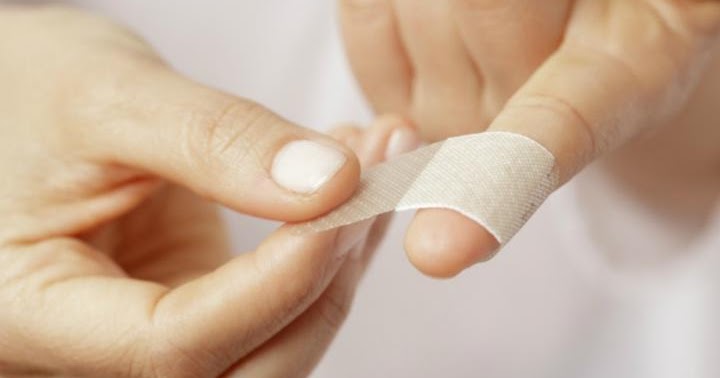
Today it is estimated that 6.5 million people cope with some form of the chronic wound and need wound care, at a total cost of $39 billion annually. More specifically, 29 percent of long-term care patients develop pressure ulcers and the cost of treating these totals $11.6 billion.
Surprisingly, 60,000 patients die annually as a result of pressure ulcers, and the per-patient cost to treat a pressure ulcer average $43,000. Venous ulcers affect 2.5 million people in the U.S. and cost $3.5 billion annually.
Needless to say, chronic wound care in this country is costly. . And, as is often the case in many industries, where there are high costs there are also high risks.
Settlements for bedsore lawsuits can range from $300,000 to $900,000, with damages being higher for stage 4 pressure ulcers and those that have persisted for several months or years.
What We Know About Wound Care Litigation
When we think of patients who need long-term care, we must first separate them into two categories: those who are over the age of 65, and those who are unable to care for their own basic needs, due to physical or mental incapacitation.
Under Federal and State Law, these patients must receive a certain standard of care, as these patients are dependent on staff for their daily needs.
As part of this, they must be treated with dignity and respect. Adequate staff must also ensure that the specific level of care needed by each resident can be maintained.
This adequate level of care includes caring for immobile (bed-ridden) residents who are at a high risk of developing bedsores, as well as the treatment required to reduce the risk of pressure ulcers.

Some of the common causes of bedsores include the following: failure to assess and inspect high-risk patients for bed sores, failure to have a sufficient number of nurses and staff in hospitals, failure to provide proper hygienic care including cleaning of bed sheets, and failure to provide proper nutrition and hydration.
The following actions can help reduce the risk of pressure ulcers and bedsores:
-
Positional Changes
-
Use of pressure-reducing bedding or mattress
-
Routine inspections of a resident’s body and bedding
-
Proper nutrition and hydration (dehydration results in dryness of the skin, increasing the risk of pressure ulcers)
-
Properly cleaning of and drying of bedding and mattresses
When these actions are not taken, the term neglect can be applied.
Essentially, neglect is defined as the failure to properly assess risk factors associated with bedsores, and the failure to take the necessary actions required to prevent them from taking place.
There are three types of neglect which take place in nursing homes:
-
Intentional Neglect: The purposeful withholding of these basic necessities.
-
Unintentional Neglect: The direct result of a caregiver’s inability or unknowing failure to provide proper care, which cannot serve as a defense against elder abuse. Residential facility caregivers are under a heightened duty to provide proper medical, emotional, and basic care.
-
Self-Neglect: Often the result of mental issues such as dementia and bipolar disorder, making the person unable to care for themselves. Caregivers are under a duty to care for those who cannot care for themselves, whether the inability to care for oneself rises from mental or physical issues.
Lastly, when filing a medical malpractice lawsuit, the statute of limitations applies.
The statute of limitations refers to the time period a patient has to file a claim. This time period can be dependent on the cause of action or type of lawsuit, as well as the jurisdiction in which the lawsuit is filed.
Under certain circumstances, the statute of limitations can be extended, such as when the patient is physically or mentally incapacitated.
Another example of a situation where the statute of limitations may be extended is when the significance of the injury is not realized until after the statute of limitations has run out.
What Constitutes Medical Malpractice?
In order for a medical malpractice lawsuit to be filed, medical malpractice must first be proven. The first step is to prove that the care the patient received was negligent.
Negligence depends on whether or not the doctor followed the “standard of care” that a reasonably competent and skilled health care professional, with a similar background and in the same medical community, would have provided under the circumstances that led to the alleged malpractice.
Proving negligence often involves the testimony of expert witnesses – doctors or other medical professionals – to determine what a competent and reasonably skilled doctor would have done under the same circumstances.
Then, an expert witness will compare the standard of care to what the patient actually received. This will determine the doctor’s liability for medical negligence.
Next, the patient must demonstrate that the doctor’s negligence caused harm or injury.
If the patient’s condition was made worse or if additional medical issues occurred as a result of the doctor’s negligence, the patient would be able to claim medical malpractice. Here, again, an expert witness is often required to validate the patient’s claim.
Following the injury, the patient must prove that damages occurred as a result of the injury.
For example, not being able to work would lead to lost wages. Similarly, additional medical care would result in an additional cost to the patient.
For all of the points mentioned above, the patient must provide the court with “a preponderance of the evidence.” Essentially, this means that each element is more likely to be true than not.
How Litigation Can Be Reduced Through Effective Wound Care
For any medical professional, reducing the risk of litigation is a significant issue. The first part of this involves being aware of some of the common medical errors and types of negligence. These are as follows:
-
Incorrect medication or dosage
-
Misdiagnosis
-
Delayed diagnosis
-
Surgical or anesthesia errors
-
Injuries related to slips and falls
-
Nursing home abuse or neglect
According to the Institute of Medicine of the National Academies, the largest category of medical errors comes from medication mistakes, which cause serious harm to more than 1.5 million patients every year.
Avoiding medical errors and negligence requires doctors to adopt some solid risk management strategies.
By keeping these strategies in place, medical professionals can better manage malpractice risks and improve the quality of care they offer to their patients. Here are some of the risks that doctors must work to alleviate:
● Bad communication
● Unsatisfactory training and failure to uphold standards
● Failure to get informed consent
● Poor follow-up
-
Lack of accurate records of all exams, procedures, and counseling
-
Failure to maintain patient confidentiality
-
Missed or delayed diagnosis
-
Failure to obtain medical malpractice insurance
Medical malpractice is a significant concern for every doctor and especially those who treat nursing home patients.
However, through education into what constitutes medical malpractice and taking steps to reduce the risks, doctors can avoid medical malpractice and live out long, fruitful careers.
Know more author: Dr. Japa Volchok DO is a General and Vascular Surgeon and the VP Operations at Vohra Wound Physicians. Dr. Volchok trained in General Surgery at Berkshire Medical Center, a University of Massachusetts Affiliate. After residency, Dr. Volchok pursued vascular surgery training at Eastern Virginia Medical School in Norfolk, VA. His vascular surgery training provided a strong base in wound care and the management of wound comorbidities which later led him to work with Vohra Wound Physicians as a physician in long-term care.

Add new comment